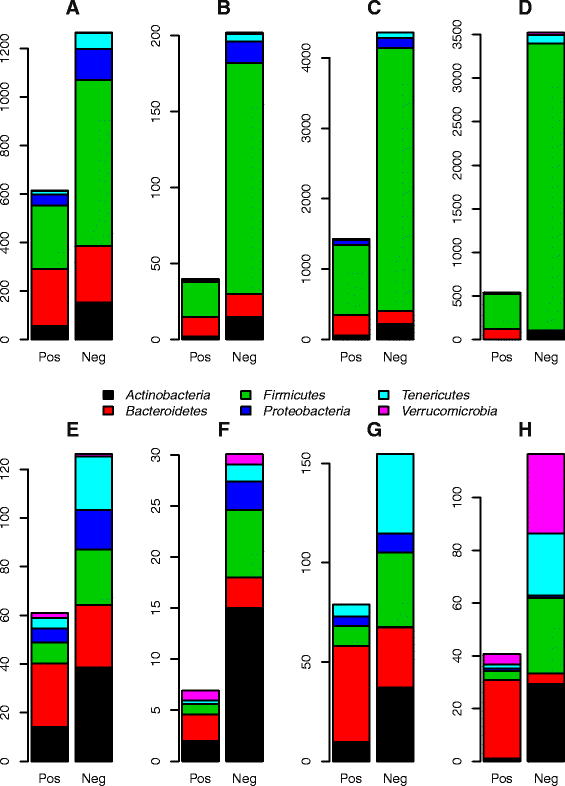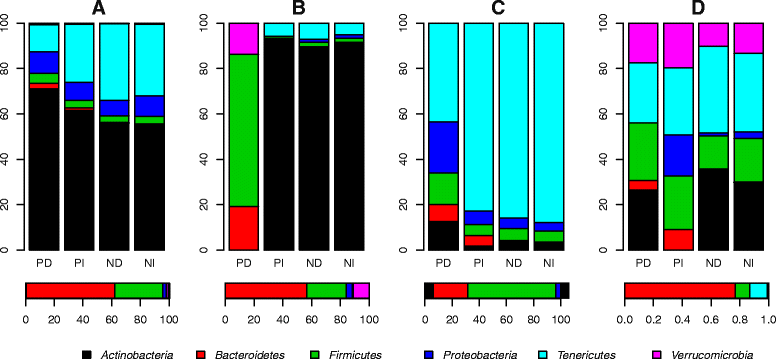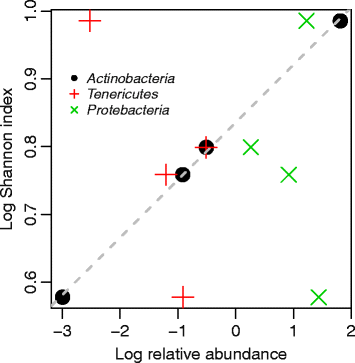Ecology of bacteria in the human gastrointestinal tract--identification of keystone and foundation taxa
- PMID: 26455879
- PMCID: PMC4601151
- DOI: 10.1186/s40168-015-0107-4
Ecology of bacteria in the human gastrointestinal tract--identification of keystone and foundation taxa
Abstract
Background: Determining ecological roles of community members and the impact of specific taxa on overall biodiversity in the gastrointestinal (GI) microbiota is of fundamental importance. A step towards a systems-level understanding of the GI microbiota is characterization of biotic interactions. Community time series analysis, an approach based on statistical analysis of changing population abundances within a single system over time, is needed in order to say with confidence that one population is affecting the dynamics of another.
Results: Here, we characterize biotic interaction structures and define ecological roles of major bacterial groups in four healthy individuals by analysing high-resolution, long-term (>180 days) GI bacterial community time series. Actinobacteria fit the description of a keystone taxon since they are relatively rare, but have a high degree of ecological connectedness, and are positively correlated with diversity both within and between individuals. Bacteriodetes were found to be a foundation taxon in that they are numerically dominant and interact extensively, in particular through positive interactions, with other taxa. Although community structure, diversity and biotic interaction patterns were specific to each individual, we observed a strong tendency towards more intense competition within than between phyla. This is in agreement with Darwin's limiting similarity hypothesis as well as a published biotic interaction model of the GI microbiota based on reverse ecology. Finally, we link temporal enterotype switching to a reciprocal positive interaction between two key genera.
Conclusions: In this study, we identified ecological roles of key taxa in the human GI microbiota and compared our time series analysis results with those obtained through a reverse ecology approach, providing further evidence in favour of the limiting similarity hypothesis first put forth by Darwin. Larger longitudinal studies are warranted in order to evaluate the generality of basic ecological concepts as applied to the GI microbiota, but our results provide a starting point for achieving a more profound understanding of the GI microbiota as an ecological system.
Figures







References
Publication types
MeSH terms
LinkOut - more resources
Full Text Sources
Other Literature Sources

